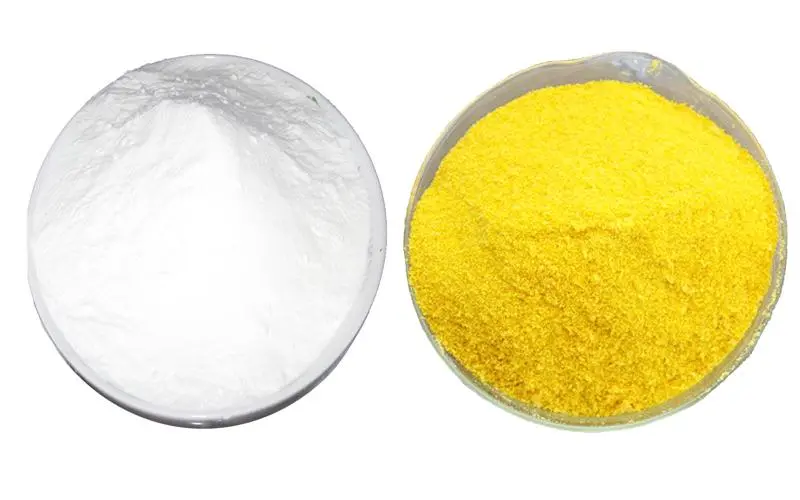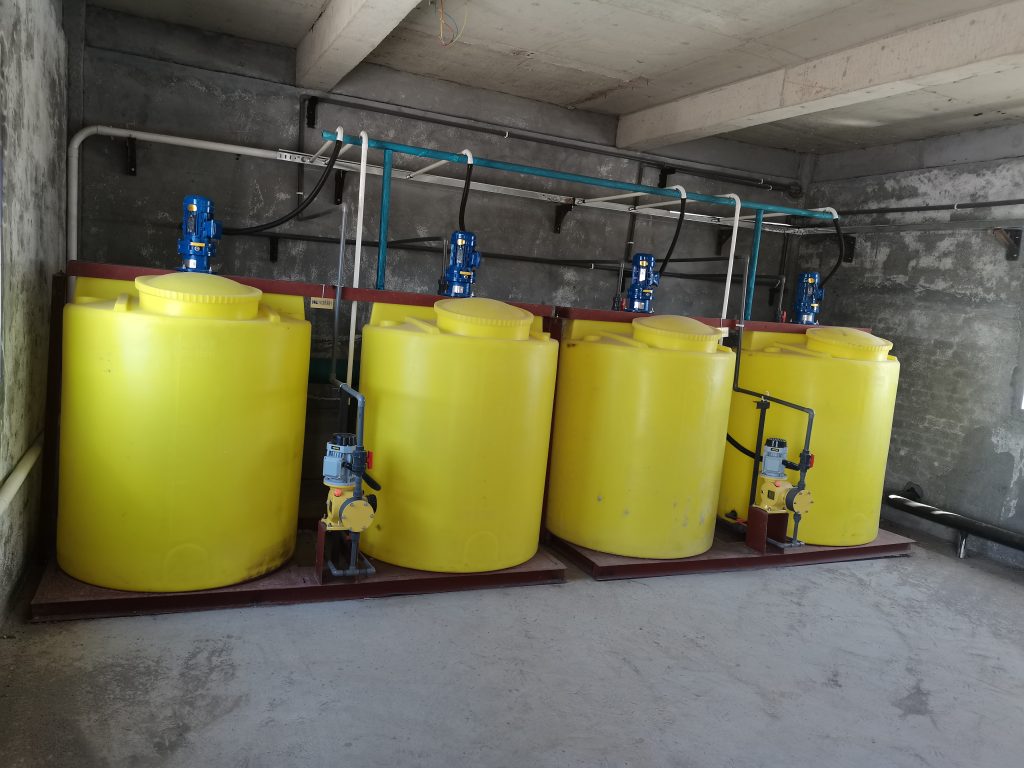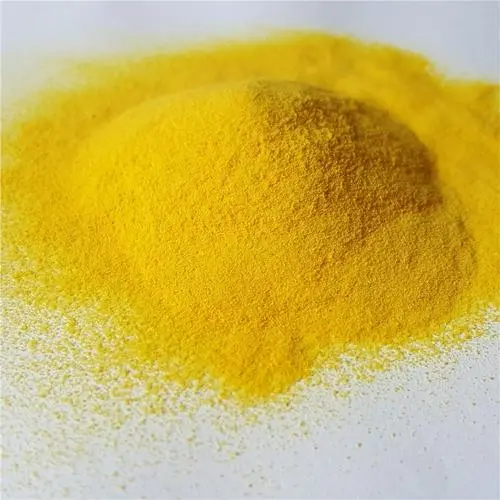The User Manual for PAC and PAM – Very Practical!
一、PAC and PAM
Polyaluminum chloride (PAC), also known as basic aluminum chloride or hydroxy aluminum chloride, is widely used to treat wastewater or sludge. It can quickly form large particle precipitates from colloids in wastewater or sludge, which can be easily separated. The molecular formula of PAC is [Al2(OH)nCl6-n]m, where n is any integer from 1 to 5, and m is the degree of polymerization, which represents the number of chain segments, and m is not greater than 10. The coagulation effect of PAC is closely related to the ratio of OH and Al (n value). The alkalinity is usually used to express the ratio, expressed as B=[OH]/(3[Al])×100%. B is required to be 40-60%, and the suitable pH range is 5-9.
Polyacrylamide (PAM), commonly known as flocculant or coagulant, belongs to coagulants. The average molecular weight of PAM ranges from thousands to tens of millions. It has several functional groups along the chain-like molecule that can partially dissociate in water, making it a high-molecular-weight electrolyte. Based on the characteristics of the dissociable groups, PAM can be divided into anionic polyacrylamide, cationic polyacrylamide, and nonionic polyacrylamide. PAM is a white powder that is easily soluble in water and almost insoluble in general organic solvents such as benzene, ether, esters, and acetone. The PAM aqueous solution is almost a transparent viscous liquid, which is non-dangerous, non-toxic, non-corrosive, and has good thermal stability. It has hygroscopicity, which increases with the increase of the ion degree. The density is 1.302mg/l (23℃). The glass transition temperature is 153℃, and PAM exhibits non-Newtonian flow behavior under stress.

Cationic and anionic PAM are suitable for wastewater or sludge with anionic or cationic charges, respectively. Cationic PAM should be used for activated sludge with anionic charges. Anionic PAM is suitable for wastewater or sludge with cationic charges, such as wastewater from steel plants, electroplating plants, metallurgy, coal washing, and dust removal. Nonionic PAM has good effects on both cationic and anionic charges, but it is expensive, which increases the treatment cost. The function of the flocculation tank
二、Reaction conditions and dosing requirements
1.The function of the flocculation tank
The function of the flocculation tank is to fully mix the coagulant with the raw water, destabilize most of the colloid impurities in the water, and allow the destabilized colloid particles to collide and aggregate in the flocculation tank, finally forming floccules that can be removed by sedimentation.
2.Reaction conditions
The growth process of the floccules is a process of contact and collision between tiny particles. The effectiveness of flocculation depends on two factors: 1) the ability of the high-molecular-weight complex formed by the hydrolysis of the coagulant to form adsorption bridges, which is determined by the properties of the coagulant; 2) the probability of collision between tiny particles and how to control their reasonable and effective collision.
The discipline of water treatment engineering believes that in order to increase the probability of collision, it is necessary to increase the velocity gradient. To increase the velocity gradient, the energy consumption of the water must be increased, that is, the flow rate of the flocculation tank must be increased. On the one hand, if the particles in the flocculation grow too quickly, two problems will arise: 1) if the floccules grow too quickly, their strength will weaken, and they will be easily broken by strong shear in the flow process. The adsorption bridges that have been broken are difficult to reconnect, so the flocculation process is also a speed-limited process. As the floccules grow, the water flow rate should decrease continuously to prevent the formed floccules from being easily broken; 2) some floccules grow too quickly, causing the specific surface area of the floccules in the water to decrease sharply, and some small particles that have not reacted completely lose the reaction conditions. The probability of collision between these small particles and the large particles decreases sharply, making it difficult for them to grow further. These particles not only cannot be intercepted by the sedimentation tank, but also cannot be intercepted by the filtration tank.

3.Dosage requirements
In the early stage of the reaction of adding coagulant, efforts should be made to increase the opportunity for the agent to come into contact with the wastewater, such as increasing agitation or flow rate. By relying on the collision between the water flow and the baffle, as well as the multiple turns of the water flow between the baffles to increase the velocity, the collision opportunity of the particles in the water is increased, and the floccules are formed. In the later stage of the reaction, in order to reduce the velocity gradient, better flocculation and sedimentation effects can be achieved.
三、PAC and PAM dosing equipment
The main equipment that constitutes the dosing equipment includes dissolving tank, storage tank, dosing mixer, dosing pump, and measuring equipment.
四、Preparation method and dosage of PAC
There are no special requirements for the preparation of PAC solution. The weight ratio of the prepared solution to the concentration is generally 10%-20%. The dosage for application is generally around 200-300 PPM (adding 200-300 mg of PAC per liter of water). The calculation of the set value in the flow meter of the dosing pump is calculated according to the method of calculating the dosing amount of PAM below.

五、PAM preparation method and dosage
Preparation method:
PAM is used as a 0.1%-0.2% aqueous solution, which should be prepared using tap water. When preparing the solution, it is important to ensure that the PAM is evenly and uniformly dispersed in the continuously stirred water. It should be added to the water as individual particles that are dispersed and not clumped together. If clumps form, large particles can form that are difficult to dissolve, resulting in water-encapsulated particles. The solution should be fully stirred until it dissolves. The prepared solution is prone to hydrolysis and should be used on the same day.

Dosage:
After adding PAM to wastewater or sludge, it should be effectively mixed for 10-30 seconds, generally not exceeding 2 minutes. The specific amount of PAM used depends on the concentration and nature of the colloids and suspended solids in the wastewater or sludge, as well as the treatment equipment used. The dosage for wastewater treatment is generally within 3-10 PPM, which means adding 3-10 grams of PAM per ton of water. The dosage for sludge treatment should be higher, and the optimal dosage should be determined through extensive experiments. Based on the optimal concentration of PAM (PPM1) and the inflow rate (t/h) and the concentration of the prepared PAM solution (PPM2), the displayed value of the dosing pump flowmeter can be calculated as follows: inflow rate (t/h)/60 × PPM1 / PPM2. For example, if the inflow rate is 100 t/h, the optimal dosage is 10 PPM, and the concentration of the prepared PAM solution is 2‰ (3kg of PAM dissolved in 1.5t of water), then the dosing flow rate indicator should be set to 8.3 LPM.
Notes:
The preparation of the drug solution should strictly follow the operating procedures and instructions.
Impurities must not be mixed into the drug solution to avoid clogging the dosing pump, flowmeter, etc.
Based on the inflow rate and the dosage notice, the dosing amount should be adjusted in a timely manner to achieve the optimal treatment effect.
